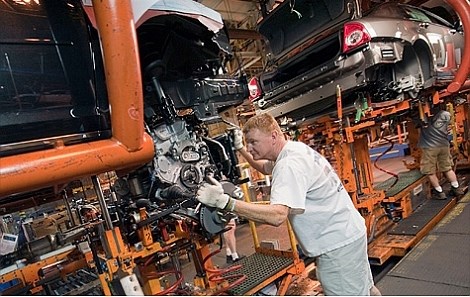Columbia Chemical Receives GMW 4700 Approval
Trivecta Ni-Z Black 70 with Trivecta Black Sealer 350 approved under the GMW 4700 Type B, BL specification

Columbia Chemical has been granted zinc nickel approval by General Motors for Trivecta Ni-Z Black 70 with Trivecta Black Sealer 350 under the GMW 4700 Type B, BL specification.
Columbia Chemical’s unique black all trivalent passivating conversion coating for electroplated zinc nickel alloy is now part of GM’s limited list of approved finishers for zinc nickel. Ni-Z Black 70 with Trivecta Black Sealer 350 meets all of the GMW 4700 TYPE B, BL specification minimum requirements including 240 hours to white corrosion, 1,000 hours to red corrosion and 61 cycles of the cyclic test.
Columbia Chemical Corporation is one of the world’s largest manufacturers of zinc and zinc alloy plating additives. For more information, contact Columbia Chemical at 330-225-3200, or www.columbiachemical.com
Related Content
-
Ultrafiltration Membranes, Filter Elements for Improved Industrial Water Reuse
Ultrafiltration membranes help with water reuse in a variety of applications.
-
NASF/AESF Foundation Research Project #122: Electrochemical Approaches to Treatment of PFAS in Plating Wastewater - 12th Quarterly Report
This NASF-AESF Foundation research project report covers the 12th quarter of project work (October – December 2023) at the University of Georgia. In our previous report, we described our work on performance and effect of surface fluorinated Ti4O7 anodes on PFAS degradation in reactive electrochemical membrane (REM) mode. This quarter, our experiments involved utilizing porous Ti4O7 plates serving both as anodes and membranes. Tests compared pristine and F-18.6 Ti4O7 anodes at current densities of 10 mA/cm2 and 40 mA/cm2. This 12th quarterly report discusses the mechanisms of the effects on EO performance by anode surface fluorination.
-
Top 5 Areas to Consider Automation of Plating Operations
Automation for finishing operations can lead to improvements in process time, repeatability and consistency of quality. Yet, processes that make sense to explore for these operational efficiencies may not always be readily apparent.













.jpg;maxWidth=300;quality=90)

